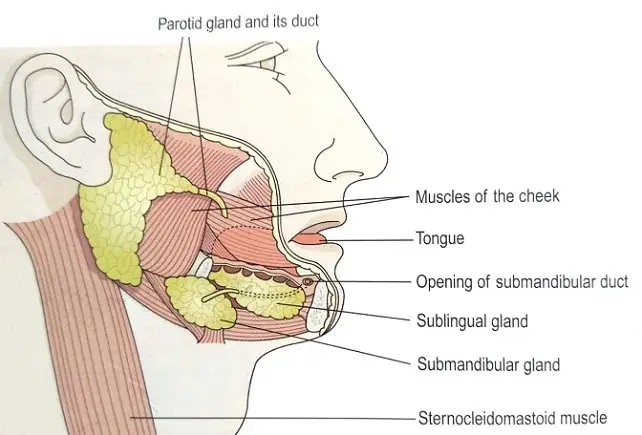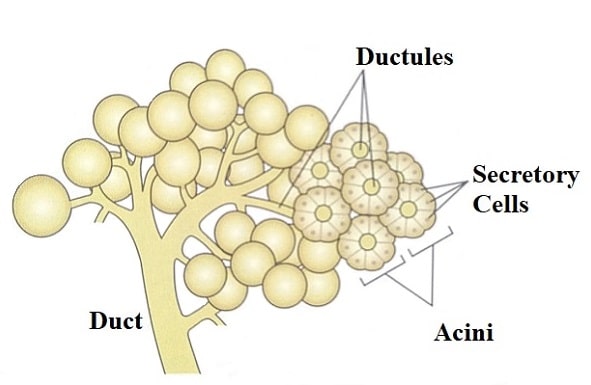Salivary glands are the exocrine glands located in the mouth. They are the organs of the digestive system. If you notice a few patterns in your mouth, you will find that
- Your mouth is always moist and never dry
- Chewing the food well gives a sweet taste
- The mouth is always clean without food debris.
- There is no growth of microbes in the mouth.
This is all due to salivary glands and their secretions in the regular phase. So, we will see them in detail below
Salivary Glands and their location
There are three pairs of salivary glands in the mouth like the
a) Parotid glands
b) Sub-mandibular glands
c) Sublingual glands.

These salivary glands are exocrine, which means they secrete their content outside of their structure. They have ducts through which the secretion is released to the distinct regions of the mouth.
Parotid glands
These are a pair of salivary glands located on either side of the face below the ears. Their ducts open near the upper second molar teeth.
Sub-mandibular glands
As the name indicates, these glands are located on the lower jaw angles on each side of the face. Ducts of these glands open on the floor of the mouth, with each on either side of the frenulum of the tongue.
Sublingual glands
These glands lie on the floor of the mouth under the tongue and in front of the submandibular glands. They have many small ducts that open into the mouth floor.
Thus we can notice more saliva below the tongue.
Besides them, there are numerous salivary glands scattered all through the mouth at different locations.
Salivary Glands Anatomy

Salivary glands are covered by a fibrous capsule. Each gland has a number of lobules within it. Each lobule is made of small acini. These acini are lined with secretory cells in a circular manner, as seen in the image above. Their secretions are collected into ductules. These ductules empty into the salivary ducts.
Blood supply to Salivary glands
Salivary glands secrete up to 1.5 liters of saliva per day. This can be possible if they have a good supply of water and other essentials.
These glands are supplied with arteries from the branches of carotid arteries in the neck region. They are drained by veins into external jugular veins.
Nervous supply to salivary glands
Salivary glands are supplied by the autonomic nervous system. The glossopharyngeal nerve supplies to the parotid gland. The parasympathetic stimulation causes profuse salivation, which is rich in water. In contrast, sympathetic stimulation inhibits secretion. However, sympathetic stimulation over the sub-mandibular glands causes small secretion, which is less watery.
Besides, there is reflex stimulation which can cause salivation when food is in the mouth. This gets conditioned fast and whenever there is salivation at sight, smell, or even thought of food.
The profuse salivation during pesticide poisoning (organo-phosphorus poising) from the mouth is due to parasympathetic stimulation.
Facts
a) Your mouth is never dry because of the maintenance of equilibrium of saliva secretion.
b) When eating something like a biscuit, and forget to drink water, still after a few minutes, you will find that your mouth is clean. There would be no biscuit debris left in the mouth as that would be carried away into the gut by saliva.